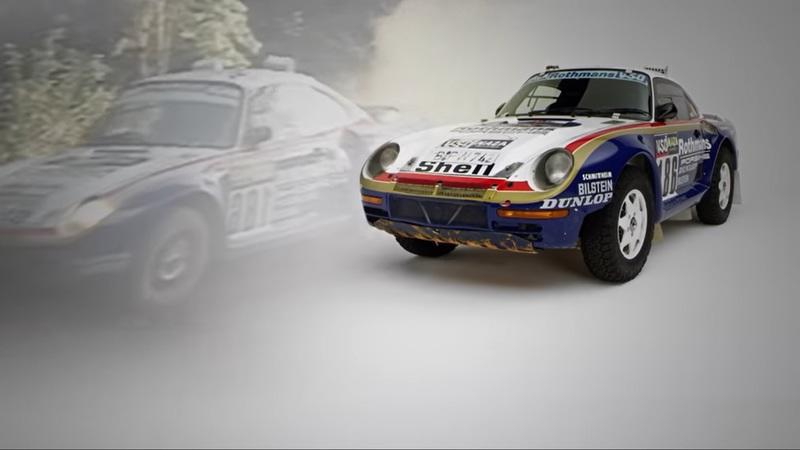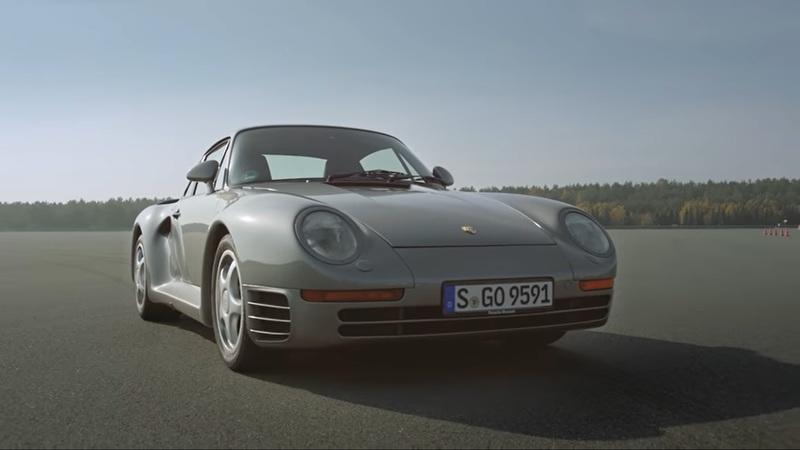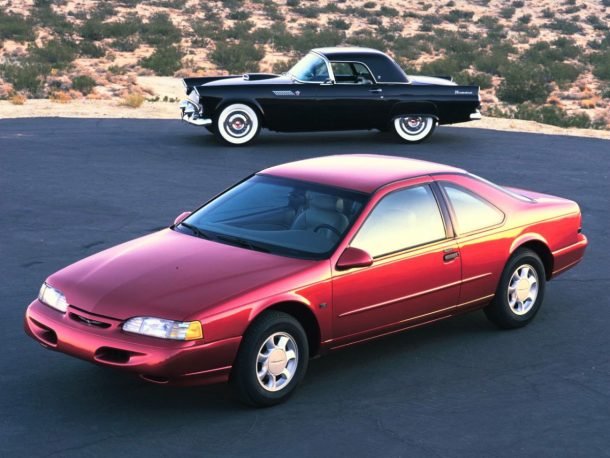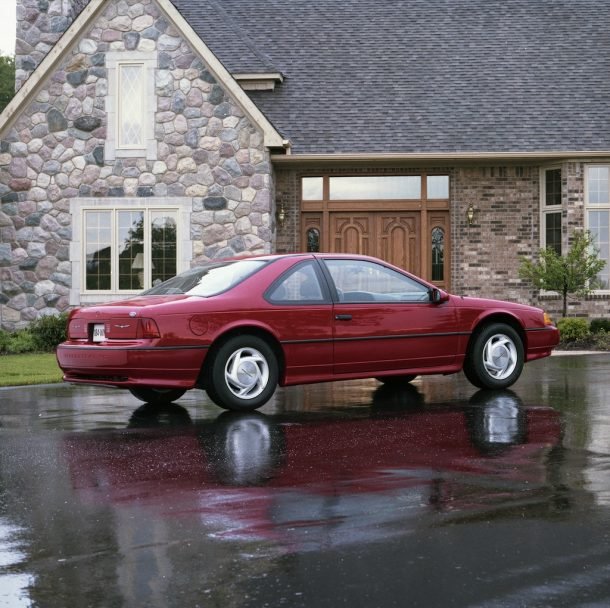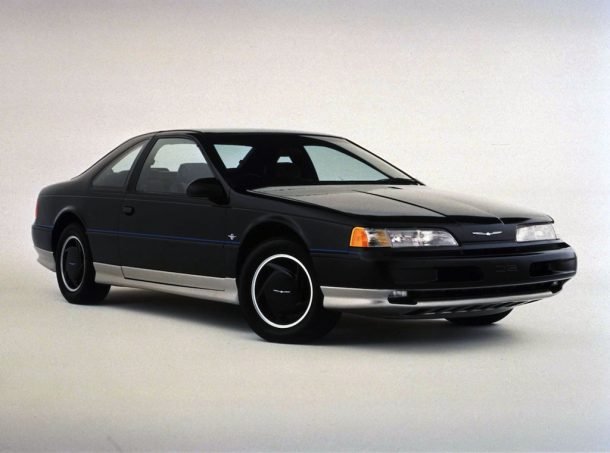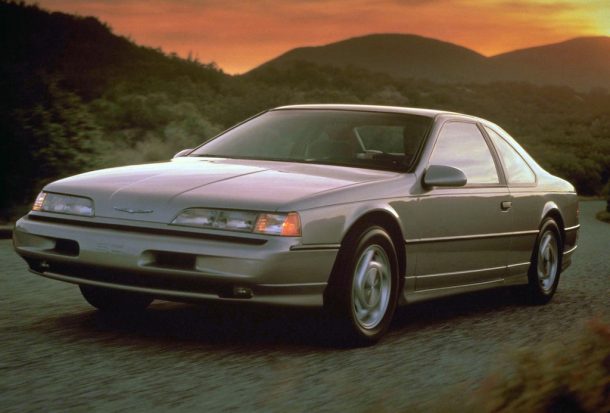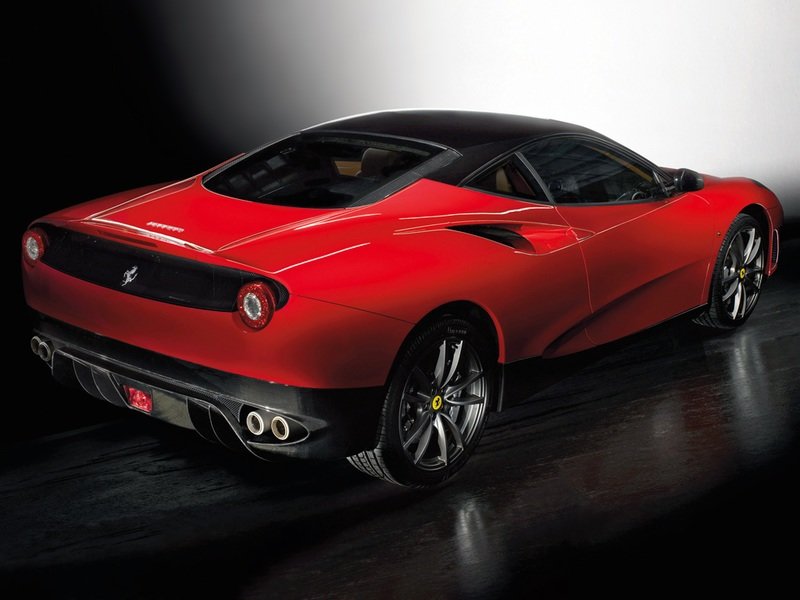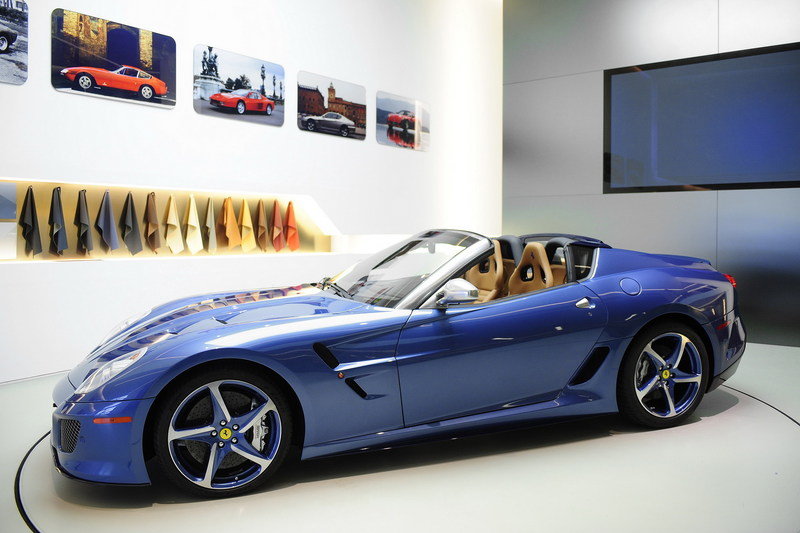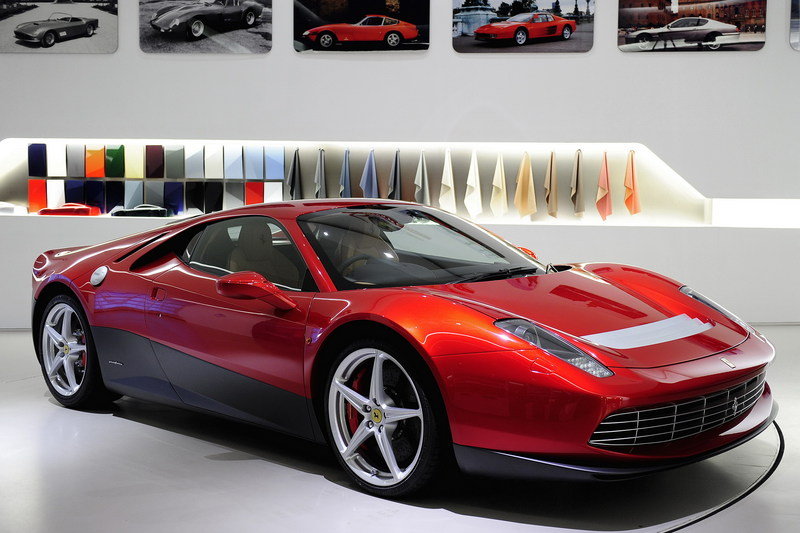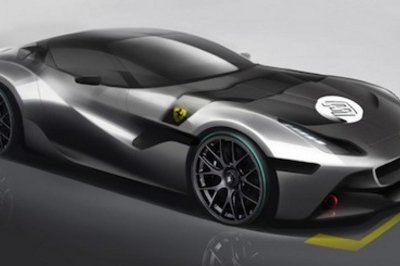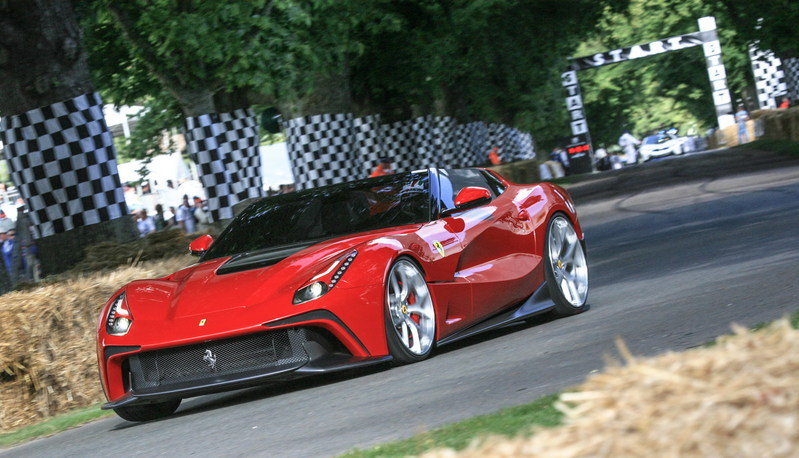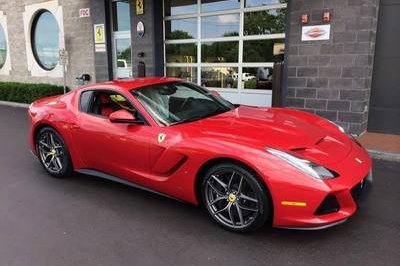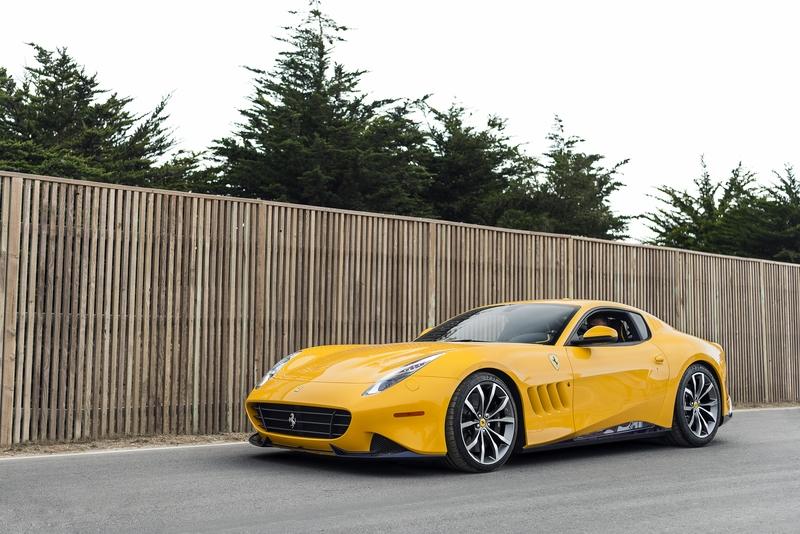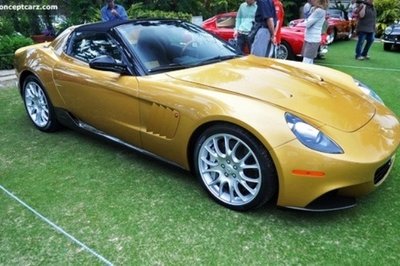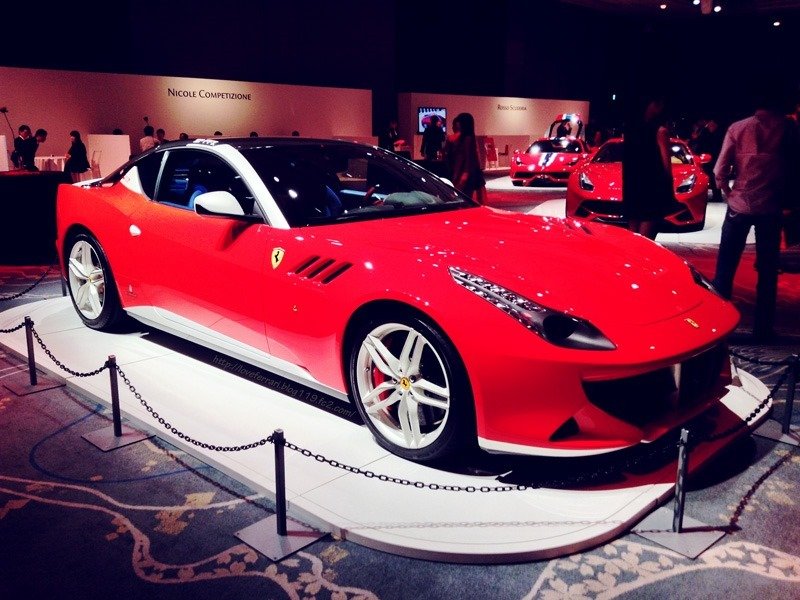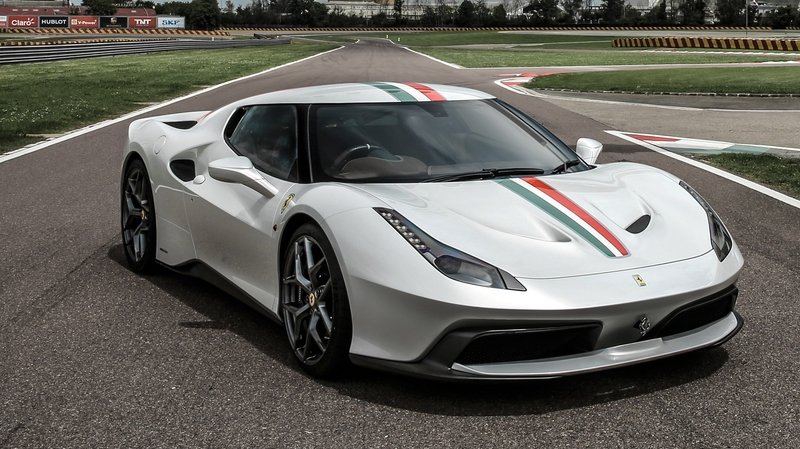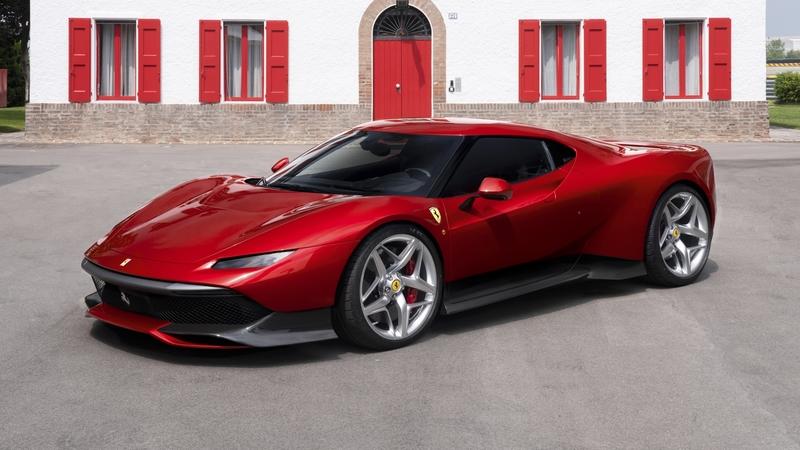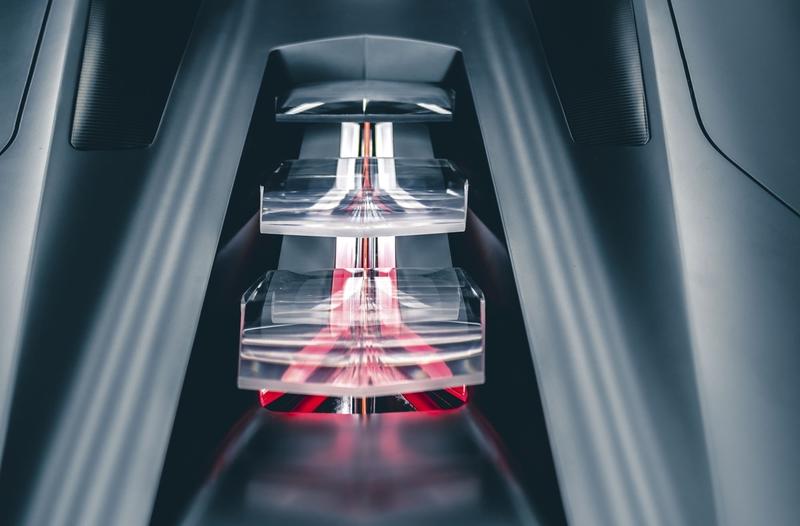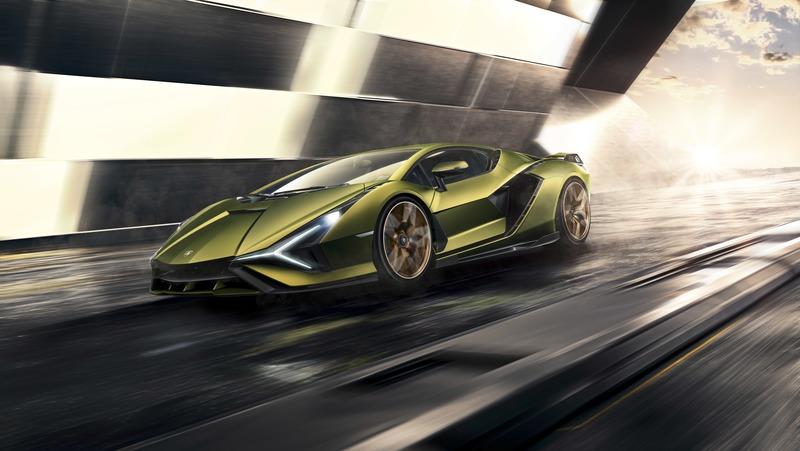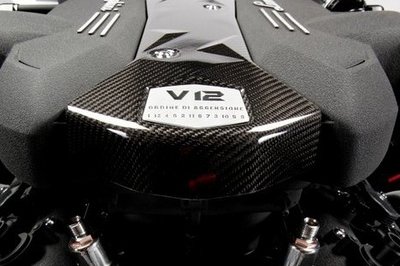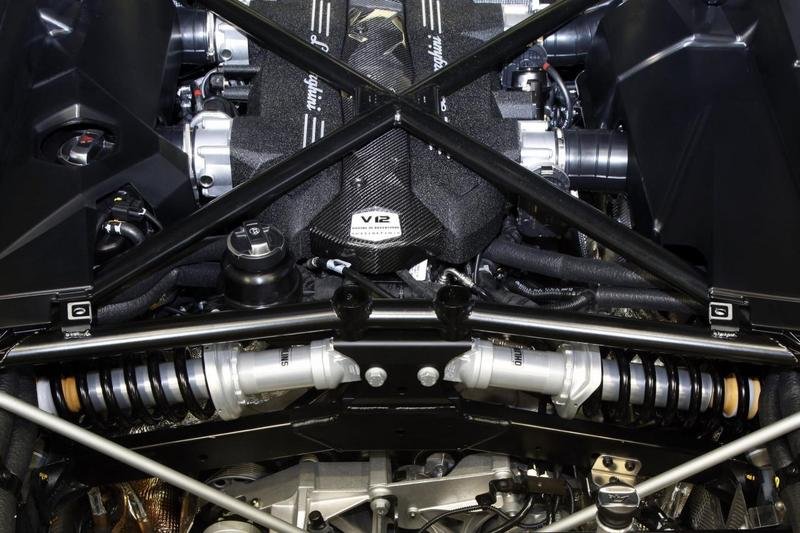2009 Ferrari SP1
Every adventure comes with a beginning, and in the case of Ferrari’s One-Off personalization program, the beginning came in the form of the SP1, the Ferrari F430-based one-off that Ferrari created for Japanese businessman Junichiro Hiramatsu, the former president of the Ferrari Club of Japan. Reports from a decade ago say that Hiramatsu was a big fan of the F100, a concept car designed by Italian design house Fiovaranti back in 1998.
Ferrari’s treatment of the SP1 isn’t as bombastic as some of the more recent one-off models it’s created, which makes you wonder if that was a product of Hiramatsu’s wishes or if Ferrari One-Off was still feeling its way through the endeavor.
Either way, the result still deserves the one-off label, in part because the minimal changes to the F430 somehow added up to a significantly more streamlined look. For those who may be confused, the SP1 is a completely different one-off animal from the Ferrari Monza SP1 Speedster that Ferrari released alongside its sibling, the Monza SP2, last year.
The 2011 Ferrari Superamerica 45 was one of the first official commissions by Ferrari One-Off, the department in charge of developing and building all the models on this list. It’s based on the Ferrari 599 GTB and inspired by the 2005 Ferrari 575M Superamerica and the 1961 Ferrari 400 Superamerica from which it gets part of its name.
The Superamerica 45’s one-off status was defined by the model’s one-piece carbon-fiber roof and glass rear window.
The whole roof panel swivels and retracts back under a carbon fiber trunk lid, which is a different treatment, too, compared to the pane of glass that Ferrari used on the 575. Under its hood sat a 6.5-liter V-12 engine that produced 661 horsepower and 457 pound-feet of torque. The Superamerica 45 also came with unique details that eventually found their way to future production models, including the front and rear bumpers that Ferrari ended up using in the 599 GTO and the wheels that made their way into the Ferrari FF. The Ferrari Superamerica was commissioned by American real estate mogul Peter Kalikow, how bought this first Ferrari — the aforementioned 1961 400 Superamerica — 45 years before he commissioned the one-off model.
Read our full review on the 2011 Ferrari Superamerica 45
The 2012 Ferrari SP12 EC is probably the first one-off Ferrari that captured the world’s attention. Part of that can be traced to the fact that renowned rock star Eric Clapton was the one who commissioned Ferrari to build it. The SP12 traces its roots from the 458 Italia, which, at that time, was still only a year removed from hitting the market. Like the Superamerica 45 that preceded it, the SP12 EC featured design cues pilfered from a number of iconic Ferraris, none as obvious as the boxer-engined Ferrari 512BB.
The two-tone red upper body and black lower body schemes come from the 512BB, as does the long fence-like front grille that occupies the entire lower front section of the car.
The shape of the hood and the body are also nods toward the 512BB. The SP12 EC isn’t as sharp around the edges as the 512BB, and the headlights are actually borrowed from another iconic Ferrari: the Enzo. Taken together, the SP12 EC stands out as a classic example of Ferrari’s ability to blend the designs of its past models to create an entirely new one. It didn’t hurt, too, that the SP12 EC came with the 458 Italia’s 4.5-liter V-8 engine that produced 570 horsepower and 398 pound-feet of torque. All told, there are reports that Clapton spent almost $4 million on the SP12 EC, a staggering sum for a Ferrari. Then again, the SP12 EC isn’t your typical Ferrari, either.
Read our full review on the 2012 Ferrari SP12 EC
The Ferrari SP Arya was probably the first one-off Ferrari that made me realize that Maranello was on to something with this division. There’s actually not a lot to know about the Arya, only that it’s owned by Indian businessman Cheerag Arya, who wanted to create his dream Ferrari that’s based on the 599 GTO. Since the man already owned a 599XX at the time he commissioned Ferrari to build the SP Arya, I’d say Arya was on to something then.
Most of the fundamental details about the SP Arya remain true to the 599 GTO’s roots, though there were some modifications made to the Ferrari’s suspension and exhaust system.
Oh, and the Arya also featured the same 6.0-liter V-12 engine as the car it’s based on. The powertrain produced 661 horsepower and 457 pound-feet of torque. If there’s anything about the SP Arya that still rings true to this day, it’s that this one-off has one of the best names of the bunch. I know it references its owner’s last name, but given what we know about the “Arya” name in pop culture these days, it’s taken on an entirely different meaning on its own.
Read our full review on the 2012 Ferrari SP Arya
The Ferrari F12 TRS was one of two one-off Ferraris that Maranello introduced in 2014. It’s also the first one-off to be based on the F12 Berlinetta, which became one of the go-to base models for future bespoke one-off Ferrari creations. The F12 TRS was completely ahead of its time in terms of its bodywork. You can look at it today and argue that it’s a brand new model. That’s how timeless its speedster-style silhouette looks. Part of it can be traced to the model from which it’s inspired from, the 1957 250 Testa Rossa. But the bigger and more important reason comes from the work put in by Ferrari’s engineers and designers.
The TRS’ low-set, wrap-around windscreen is one of its many design highlights, though you can argue that all off the one-off’s unique qualities come to a head with its 6.3-liter V-12 engine that produces a stomach-punching 740 horsepower and 508 pound-feet of torque.
Features aside, the F12 TRS also holds the distinction of being the only — so far — one-off Ferrari that somehow became a two-off Ferrari. That’s because the car’s unidentified owner actually had a second model built with flamboyant chrome silver paintwork.
Read our full review on the 2014 Ferrari F12 TRS
The 2014 Ferrari SP America is probably my least favorite one-off Ferrari, but that’s not an indictment on Ferrari One-Off or Danny Wegman, the American supermarket tycoon who commissioned Ferrari to do it. Like the F12 TRS that came before it, the SP America is based on the Ferrari F12 Berlinetta. Unlike the TRS that was inspired by the 250 Testarossa, the SP America was inspired by what is, without question, the holy grail of all Ferrari models, the 250 GTO.
The SP’s reverse scallop rear section that integrates the round taillights are taken straight out of the 250 GTO.
The dramatically kicked-up rear spoiler is another design nod to the icon among Ferrari icons. A few subtle design cues also reference the 250 GTO, including the three openings on the hood and the slip vent aft that you can see in the rear-quarter glass. Power comes from the same 6.3-liter V-12 engine that sits under the hood of the F12 Berlinetta. The mill produces 740 horsepower and 508 pound-feet of torque. The SP America is still a stunner, but as more one-off Ferraris have arrived, this one doesn’t hold as much sway as it once did when it arrived.
Read our full review on the 2014 Ferrari SP America
2016 Ferrari SP 275 RW Competizione
Arguably the most retro-inspired design of any one-off Ferrari ever created, the Ferrari SP 275 RW Competizione arrived in 2016 at the behest of American dentist Rick Workman. This one-off is also based on the F12 Berlinetta, though the design inspiration behind its retrofitted appearance comes by way of the 1965 Le Mans-winning Ferrari 275 GTB/C Speciale.
The SP 275 RW Competizione’s pouty nose, bulgy wheel arches, and the abundance of slat vents alongside the car’s body are all design hallmarks of the iconic 275 GTB/C Speciale.
Even if it sits on the underpinnings of the F12 Berlinetta, the SP 275 RW Competizione actually uses the same 6.3-liter V-12 engine that’s found under the hood of the track-focused F12tdf. By virtue of boasting that modified mill, the SP 275 RW Competizione boasts an output of 769 horsepower and 520 pound-feet of torque. This one-off may look like it’s lost in time, but it sure as heck has enough power and performance capabilities to justify its billing as a true one-off Ferrari.
The Ferrari P540 Superfast Aperta was the second car to come through Ferrari’s One-Off program. It was built for Edward Walson, the son of John Walson, otherwise known as the man who created cable television.
The P540 Superfast Aperta was also the first one-off Ferrari to trace its roots to the Ferrari 599.
Significant modifications were made to the car, including cutting parts of the roof and tweaking the chassis as a result of the roof getting cut. The gold finish on the body was an added touch, presumably to give the P540 Superfast Aperta an extra layer of shine to flaunt its one-off status. As flamboyant as it looked, the P540 Superfast was also fast and powerful. It came with a 6.0-liter V-12 engine that produced 612 horsepower and 448 pound-feet of torque. It was the most powerful series-production Ferrari of that time, making it a fitting candidate to serve as the basis of what’s become one of the nicest-looking one-off Ferraris to come out of Maranello.
Read our full review on the 2009 Ferrari P540 Superfast Aperta
Every so often, Ferrari creates a one-off whose roots are hard to pin down. Technically speaking, the Ferrari SP FFX is based on the Ferrari FF. That’s been established. But if you look at the actual one-off, it’s hard to shake off images of the California.
The front section, for example, looks a lot more aggressive than a series-production FF, specifically the inclusion of two vertical sections in the grille that completely changes the area’s entire aesthetics.
The rear end was also completely redesigned to accommodate a coupe-like tail. Then there’s the two-tone, red-and-white color scheme, which actually looks good on the one-off. There’s definitely more to the SP FFX than meets the eye, though. Power comes from the FF’s 6.3-liter V-12 engine that produces 651 horsepower and 504 pound-feet of torque. Perhaps the owner of this ride, an unidentified individual from Japan, decided that he wanted a Ferrari FF that looked more like a traditional coupe than a fastback model. Well, he certainly got his wish, didn’t he?
Read our full review on the 2014 Ferrari SP FFX Coupe
The Ferrari 458 MM Speciale is an interesting kind of one-off. It’s based on the 458 Speciale, and while you can still see hints of the 458 Speciale in the body, all the actual labels are completely bespoke, designed and created in-house by Ferrari Centro Stile using hand-finished aluminum.
The front and rear bumpers are also different by virtue of being made from carbon fiber.
The other notable Ferrari from which the 458 MM Speciale takes inspiration from is the 288 GTO. You see parts of that homage with the wrap-around windscreen. Ferrari’s Italian ancestry is also prominently displayed with the tricolore racing stripes running the length of the supercar. The 458 MM Speciale gets its power from the same 4.5-liter V-8 engine as the 458 Speciale. That engine produces 597 horsepower and 398 pound-feet of torque. A certain British individual owns the one-off Ferrari 458 MM Speciale so the next time you find yourselves in the U.K., be on the lookout for this striking Ferrari.
Read our full review on the 2016 Ferrari 458 MM Speciale
The Ferrari SP38 Deborah is, hands down, my favorite among all one-off Ferraris ever made. It’s based on the 488 GTB and was designed with none other than the iconic Ferrari F40 in mind. You can find traces of the F40 scattered throughout the SP38 Deborah, none more prominent than the static rear wing that sits at the rear of the F40-like rear clamshell. Everything else about the SP38 Deborah’s design speaks to the skills of Ferrari’s designers.
The wrap-around windshield that we saw in the 458 MM Speciale makes a return appearance in the SP38 Deborah.
The slit-looking headlights exude aggressiveness, and the free-flowing nature of the whole body perfectly encapsulates how incredible the SP38 Deborah is to look at. It comes with the same powertrain as the 488 GTB — a 3.9-liter V-8 engine that produces 661 horsepower and 561 pound-feet of torque — but it’s an entirely different car in it of itself. There’s no word on who the owner of this one-off Ferrari is, but I’m willing to bet that whoever that individual knows someone named “Deborah.”
Read our full review on the 2018 Ferrari SP38 Deborah

